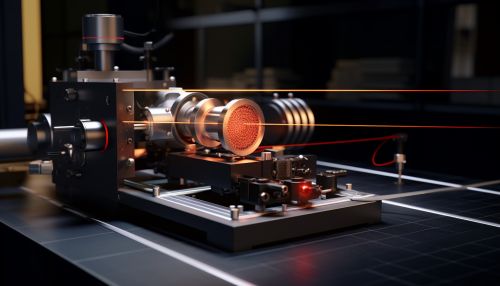Quantum Optomechanical Systems
Introduction
Quantum optomechanical systems are a branch of quantum optics that studies the interaction between light and mechanical motion at the quantum level. These systems have gained significant attention in recent years due to their potential applications in quantum information processing, quantum communication, and quantum sensing.
Principle of Operation
Quantum optomechanical systems operate on the principle of quantum mechanics. They involve the coupling of a mechanical oscillator, such as a mirror in an optical cavity, to an optical field. The interaction between the mechanical oscillator and the optical field results in a change in the optical field's properties, such as its phase or amplitude. This change can be measured, providing information about the mechanical oscillator's state.


Types of Quantum Optomechanical Systems
There are several types of quantum optomechanical systems, each with its unique characteristics and applications. These include:
- Optomechanical Cavities: These are the most common type of quantum optomechanical systems. They consist of an optical cavity with a movable mirror. The mirror's motion affects the cavity's resonance frequency, which can be measured using light.
- Nanomechanical Systems: These systems involve the coupling of a nanoscale mechanical oscillator to an optical field. They have potential applications in quantum information processing and quantum sensing.
- Photonic Crystal Optomechanical Systems: These systems involve the coupling of a mechanical motion to an optical field within a photonic crystal. They offer the advantage of high optomechanical coupling rates and low mechanical dissipation rates.
Applications of Quantum Optomechanical Systems
Quantum optomechanical systems have a wide range of potential applications, including:
- Quantum Information Processing: Quantum optomechanical systems can be used to create quantum bits, or qubits, which are the basic units of information in quantum computing. They can also be used to transfer quantum information between different physical systems, such as between light and matter.
- Quantum Communication: Quantum optomechanical systems can be used to generate and manipulate quantum states of light, which can be used for secure quantum communication.
- Quantum Sensing: Quantum optomechanical systems can be used to measure physical quantities, such as force, mass, and temperature, with unprecedented precision.
Challenges and Future Directions
Despite the significant progress made in the field of quantum optomechanics, there are several challenges that need to be addressed. These include the need to improve the efficiency of optomechanical coupling, reduce mechanical dissipation, and increase the coherence time of quantum states.
Looking ahead, the field of quantum optomechanics is expected to continue to grow and evolve. Future research directions may include the development of new types of quantum optomechanical systems, the exploration of new quantum phenomena, and the realization of practical applications in quantum information processing, quantum communication, and quantum sensing.
